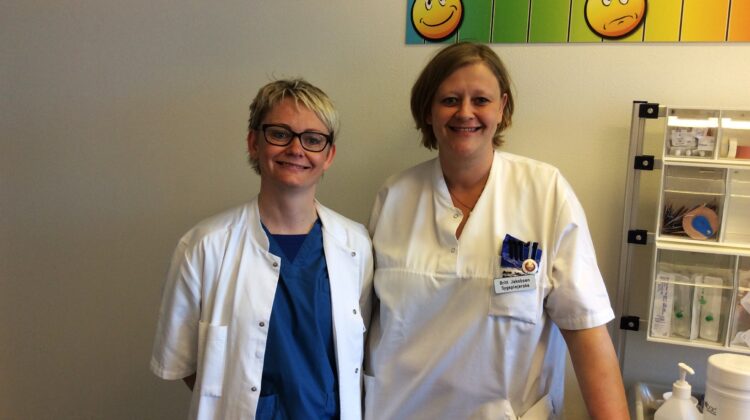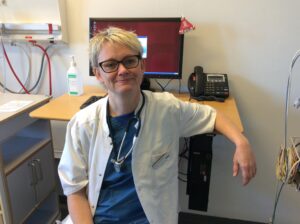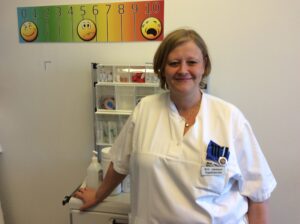
Healthcare premises: reflections on sound by hospital staff
Children crying. Alarms beeping. Verbal communication. Footsteps.
Healthcare premises are often complex sound environments and the cognitive load on staff is getting more and more challenging. Despite this, nurses and doctors rarely complain if the acoustics are not suitable for the activities – because their number one focus is to help people. We visited a hospital in Denmark to learn about the staff’s awareness of sound and acoustics. How do they feel and what do they think about the patients’ needs?
Actually – I’m only aware of the sound when it’s gone…
 Berit Sørensen, Neurologist
Berit Sørensen, Neurologist
‘Recovery, sleep, and silence are really important to my patients. They are here because of a disease in their brain and I consider them to be extremely sensitive to noise. The brain is a great organ – it can really do many things but it is also very fragile and especially when it comes to noise exposure. Therefore, when one of my patients with a brain tumor is admitted to hospital or if a patient has had an epileptic seizure, silence is a crucial part of recovery.’
‘Despite this knowledge, I have often thought about how little we actually worry about noise, sound, and acoustics in the healthcare business in general. We actually don’t think about it in our daily work – not even when we have for example migraine patients in noisy multi-bed rooms! We also have elderly people with dementia who need both visual and auditive tranquility. But when we work, our focus is on the patient not on the surroundings. I don’t really think that noise and high sound levels stress me in the acute situation. However I know that when we are a lot of people in a room at the same time misunderstandings happen and the communication gets problematic.‘
‘Actually – I’m only aware of the noise when it’s gone. When suddenly – for a short time – silence is the only sound I hear, I recognize it.’
It affects me when I cannot fix it…
‘We don’t talk very much about silence with our patients – but I know that they need it! When we have patients in single rooms the problems are not that big but I myself get affected by noise when we have patients in multi-bed rooms – because I cannot take it away (the noise) from them. It would be easy just to turn off the television, control the activities and to send people out of the room – but sometimes it’s not possible to do all of these things because the people are needed in the room (doctors, nurses, coordinators, laboratory technicians), and everyone needs to talk! This is a problem to me – I get frustrated and affected by it – because we cannot hear what is being said. And I cannot fix it!’
‘This is also the case when I have my lunch break… When a lot of people are in the lunch room – when the table is full, it is impossible for me to hear anything – and I have to raise my voice to be heard. This is my only possibility to have a break but the auditory load makes it impossible for me to relax at all.’
Healthcare premises and Activity Based Design
Activity based design is more important than ever in hospitals and healthcare premises. The staff knows that sound affects both patients and themselves and despite that, they rarely complain. Research shows that sound pressure levels in hospitals have increased on average by 15 dB (daytime) and 18 dB (nighttime) since 1960[1] . At the same time we know from other research that lowering the noise levels will have a positive effect on medication reduction[2]. The paradox in healthcare seems to be that we know about the importance of acoustics and great sound environments but in a lot of healthcare premises we only talk (very little) about it.
Maybe acoustic standards could lead the way?
Read more posts on acoustics in healthcare facilities or download a full magazine to your iPad or Android tablet.
[1] Busch-Visniac et al, ‘Noise Levels in John Hopkins Hospital’, Journal of Acoustical Society of America, 2005
[2] Hagerman et al, ‘Influence of intensive coronary care acoustics on the quality of care and physiological state of patients’, International Journal of Cardiology, 2005


